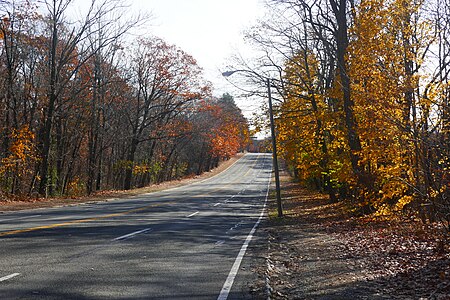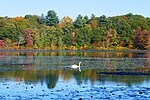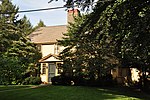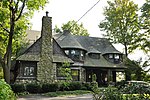Hammond Pond Parkway
Historic districts in Middlesex County, MassachusettsHistoric districts in Norfolk County, MassachusettsHistoric districts on the National Register of Historic Places in MassachusettsNRHP infobox with nocatNational Register of Historic Places in Brookline, Massachusetts ... and 7 more
National Register of Historic Places in Newton, MassachusettsParks on the National Register of Historic Places in MassachusettsParkways in MassachusettsRoads on the National Register of Historic Places in MassachusettsTransportation in Middlesex County, MassachusettsTransportation in Norfolk County, MassachusettsUse mdy dates from August 2023

Hammond Pond Parkway is a historic parkway in Chestnut Hill, Massachusetts. The road, built in 1932, extends 2 miles (3.2 km) from Hobart Road (at Beacon Street) in Newton to Horace James Circle in Brookline, where it joins the West Roxbury Parkway. It was designed by Charles Eliot and the Olmsted Brothers to provide a parkway setting that provided access from Brookline, Newton, and the western portions of Boston to the southern parks of the Emerald Necklace. The parkway was listed on the National Register of Historic Places in 2004.
Excerpt from the Wikipedia article Hammond Pond Parkway (License: CC BY-SA 3.0, Authors, Images).Hammond Pond Parkway
Boylston Street, Newton Thompsonville
Geographical coordinates (GPS) Address Nearby Places Show on map
Geographical coordinates (GPS)
| Latitude | Longitude |
|---|---|
| N 42.321111111111 ° | E -71.1725 ° |
Address
Boylston Street
Boylston Street
02459 Newton, Thompsonville
Massachusetts, United States
Open on Google Maps










